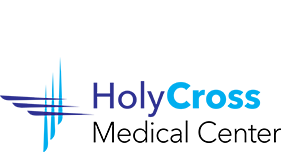A stress echocardiogram is a diagnostic exam using high frequency sound waves and treadmill exercise to study the heart, assess exercise tolerance and the health of your heart’s blood supply. Ultrasound does not involve the use of any radiation and is safe.
How is the examination performed?
A stress echocardiogram is done in three parts. First, ultrasound will be used to acquire images of your heart at rest. Second, you will walk on a treadmill to increase your heart rate. Third, another set of images-the stress images-will be obtained immediately following exercise.
Who is a candidate for a stress echocardiogram?
Your doctor may order a stress echocardiogram if you have symptoms that may be concerning for heart disease. Typical symptoms include shortness of breath, leg swelling, fainting or irregular heart beats.
Will I need to prepare for the exam?
Yes:
- Except for a little water, you must be fasting for 6 hours.
- No medications taken at least 12 hours before your exam. If you are concerned about this, please discuss with your clinician.
- Bring a list of all your medications with you.
- Wear comfortable clothes and shoes for walking on the treadmill.
What will I experience?
A registered Cardiovascular Ultrasound Technologist will perform your exam and will answer any question you may have. First, you will lie down on the stretcher and the Technologist will place some warm gel on your chest to acquire the resting images. Then, the Technologist will place EKG leads or stickers on your chest to obtain baseline heart rate and rhythm measurements. Your blood pressure and oxygen saturation will be measured before the stress portion of the exam. You will walk on the treadmill until your heart rate reaches a predetermined level or as directed by the Cardiologist. The treadmill will increase speed and incline every 3 minutes until you reach that level. After the exercise is completed, you will be asked to lie down on your left side, this time to acquire the stress images.
After the images are acquired, the Technologist will give you a towel to wipe off the gel.
Sometimes, if the heart is difficult to visualize, we may need to give you an injection of a small, safe amount of contrast called Optison. This will improve the image quality. If this occurs, the technologist will explain everything and go through a consent form for you to sign.
In most cases the Cardiologist will be able to give you the results of your exam before leaving.
What happens next?
Your images will be analyzed by the Technologist and sent to the Cardiologist for interpretation.
Your images will be interpreted by a State of New Mexico licensed and board certified Cardiologist. A copy of the Cardiologist’s report will be sent to your clinician who will explain the results to you.


